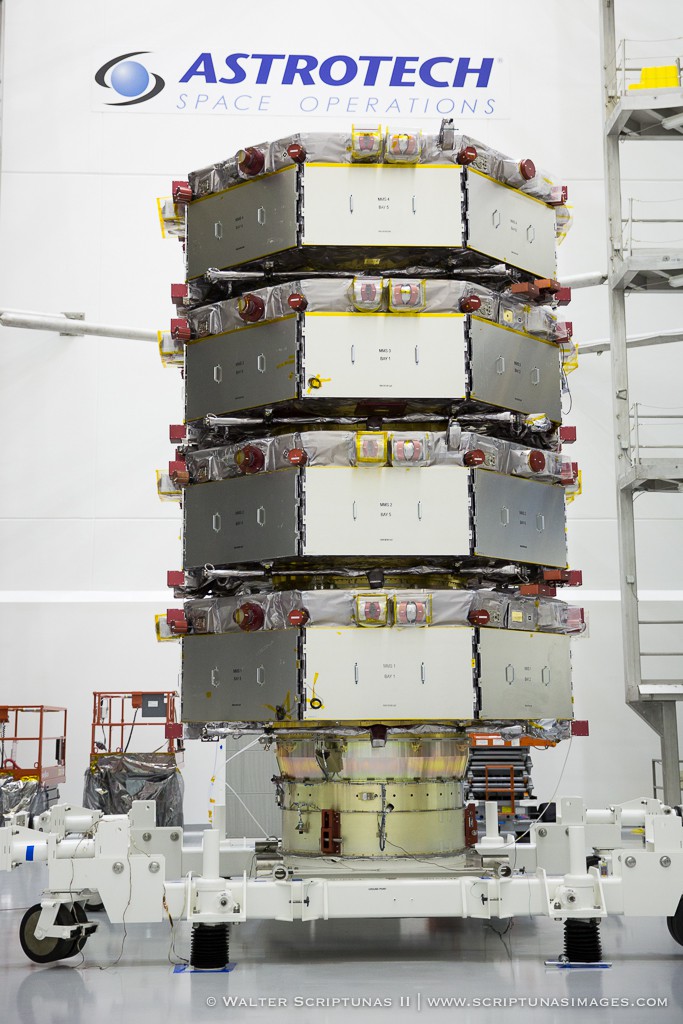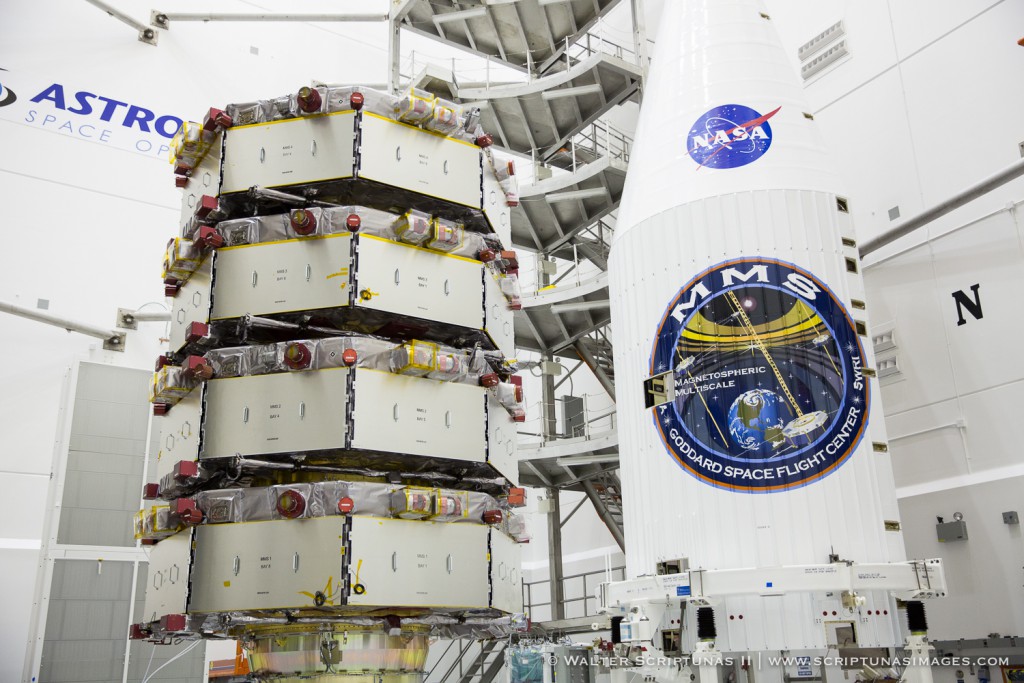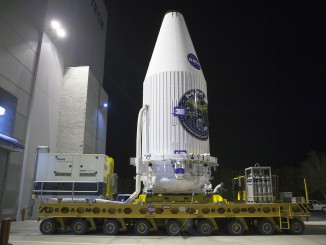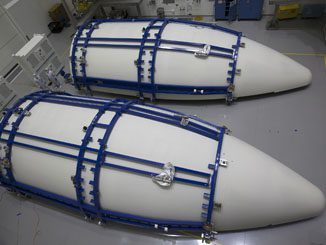
TITUSVILLE — A stack of four satellites, each one carrying 25 science sensors and together will perfect the art of formation flying, is being packaged inside an Atlas 5 rocket nose cone in preparation for mounting atop the booster next week.
The Magnetospheric Multiscale mission, or MMS, will explore explosions in the Earth’s magnetic field after its March 12 launch from Cape Canaveral, Florida.
“This is the culmination of hundreds of people’s work. It’s been a decade of focus for the science team finally coming to fruition. We’re very anxious to launch,” said Craig Tooley. the MMS project manager from NASA-Goddard.
“The flow has gone very, very smooth,” Tooley added.
Now fueled with hydrazine and mated in a “super stack” for launch, crews from United Launch Alliance are preparing to encapsulate the satellites on Monday.
“We are stacked, we are fueled, we’re ready to go,” said Brent Robertson, MMS deputy project manager at NASA-Goddard.
Given the towering height of the stack, the extra-extended payload fairing will be used for this launch to enclose the satellites during the climb through Earth’s atmosphere.
One last chore before sealing up the spacecraft for liftoff will see protective covers removed from the satellites.
“It’s actually quite an involved process. There’s over 700 items that have to be removed from the spacecraft before we fly. Of course, we want to very, very careful to make sure we don’t miss anything. That activity will take the next four days,” Robertson said.

Next, the payload will be transported by road from the commercial Astrotech processing campus in Titusville to the Air Force station at Cape Canaveral to join the awaiting Atlas 5 rocket. The move is planned for next Thursday, Feb. 26.
The Atlas 5, flying in the 421 configuration, will feature a pair of strap-on solid motors to lift MMS into a highly elliptical orbit around the Earth. The orbit will be shaped by two firings of the Centaur upper stage.
It will be the 53rd Atlas 5 flight and the 12th for NASA.
“If you take an MMS with its booms out, it’s about the same size as a baseball diamond,” said Tooley.
“We have them spinning at three RPM with these long wires, and we have to carefully fire our rockets to maneuver them to adjust the attitude and the orbit. We have four of them in very similar but different orbits.”
The flight dynamics is the most challenging project Goddard has ever flown, Tooley said.
“This is a pretty difficult mission. That is why it was built in-house at Goddard. Most missions have a contractor.”
The mission will study magnetic reconnections, which happens when magnetic field lines break and reconfigure, releasing an explosive burst of energy. As the formation-flying satellites loop around Earth, they will measure in three dimensions the characteristics of magnetic reconnections.
“It’s really a flying laboratory,” Tooley said.



